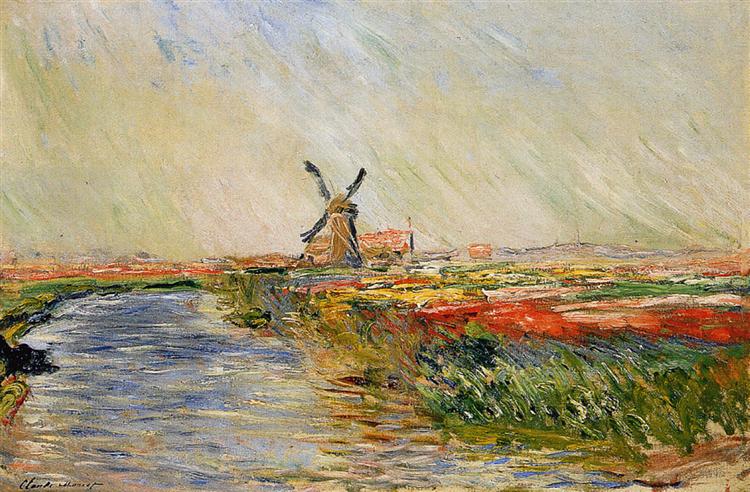Description
The painting "Tulipanes field in Holland" by Claude Monet, created in 1886, is an emblematic work that reflects both the artist's technical mastery and his deep appreciation for nature and light. In this piece, Monet captures the exuberance and colorful vibrant of the Tulipanes fields, an issue that had already begun to explore on his trips to the Netherlands. The composition stands out for its dynamic use of color and light, characteristics that would largely define the impressionist movement of which Monet is one of the main exponents.
From the first glance, painting radiates a sense of joy and vitality. The color palette is intensely saturated, with tones that range between the living red and yellow tones of the tulips, interrupted by touches of white that provide a visual respite. This combination not only highlights the unique beauty of flowers, but also represents Monet's love for the changing light of the landscape, capturing the effect of daylight that transforms the fields into a color show. The technique of loose and fast brushstrokes is a characteristic of Monet, who seeks not only to reproduce a landscape, but to evoke a sensation of atmosphere and movement.
The composition is organized in such a way that guides the viewer's gaze from the fore, where the lush tulips are located, to the bottom, where you can glimpse a line of trees that serve as a backdrop to the scene. This composition strategy provides a depth that invites the observer to get lost in the vastness of the field, feeling almost immersed in the landscape itself. Unlike other works where Monet includes human figures, in this Tulipanes field there are no visible characters. This allows nature itself to be the protagonist, underlining the amazing show of the flora at its maximum splendor point.
A fascinating aspect of "Tulipanes field in Holland" is its historical context. Painted during an era in which Europe began to experience greater appreciation for flowers and ornamental cultivation, Monet's work also responds to a growing fascination with the gardens of Holland, in particular by the Tulipanes, whose popularity had exploded with the "Tulipan madness" in the seventeenth century. In this sense, Monet not only represents a field, but pays tribute to a rich cultural tradition that has symbolized beauty and fortune.
Monet, through his work, contributed to the development of impressionism, a movement that broke with traditional artistic norms by focusing on outdoor painting and the study of natural light. "Tulipanes field in Holland" can be contextualized within its contemporary ones, such as "Los Nenúfares" and "Impression, Rising Sun", where luminosity and atmosphere play central papers, blurring the lines between the object and the light that wraps it .
In conclusion, "Campo de Tulipanes in the Netherlands" by Claude Monet is not only a representation of a flowery landscape, but a testament to the artist's ability to celebrate the ephemeral beauty of nature through his unmistakable style. It is an invitation to contemplate the natural world, while we are reminded of the transience of those moments of splendor. As a window in light and color, this work remains a milestone in art history, an echo of romanticism by nature that is in the heart of Monet's work and impressionism as a whole.
KUADROS ©, a famous paint on your wall.
Hand-made oil painting reproductions, with the quality of professional artists and the distinctive seal of KUADROS ©.
Reproduction service paintings With a guarantee of satisfaction. If you are not completely satisfied with the replica of your painting, we refund your money 100%.

